01 —
Bernat Klein & High Sunderland
Bernat Klein (1922–2014) was a designer, colourist, artist, and industrialist who lived and worked in the Scottish Borders from 1950 till 2014.
Text by Alison Harley
Images by Gordon Burniston
Walking into High Sunderland, the home of Bernat Klein, is walking into a living expression that speaks of Klein’s singular philosophy on design and its influence on the human condition. Although Klein’s physical being is no longer, his life is described by High Sunderland. It’s not a museum but home to the Klein Family since 1957.
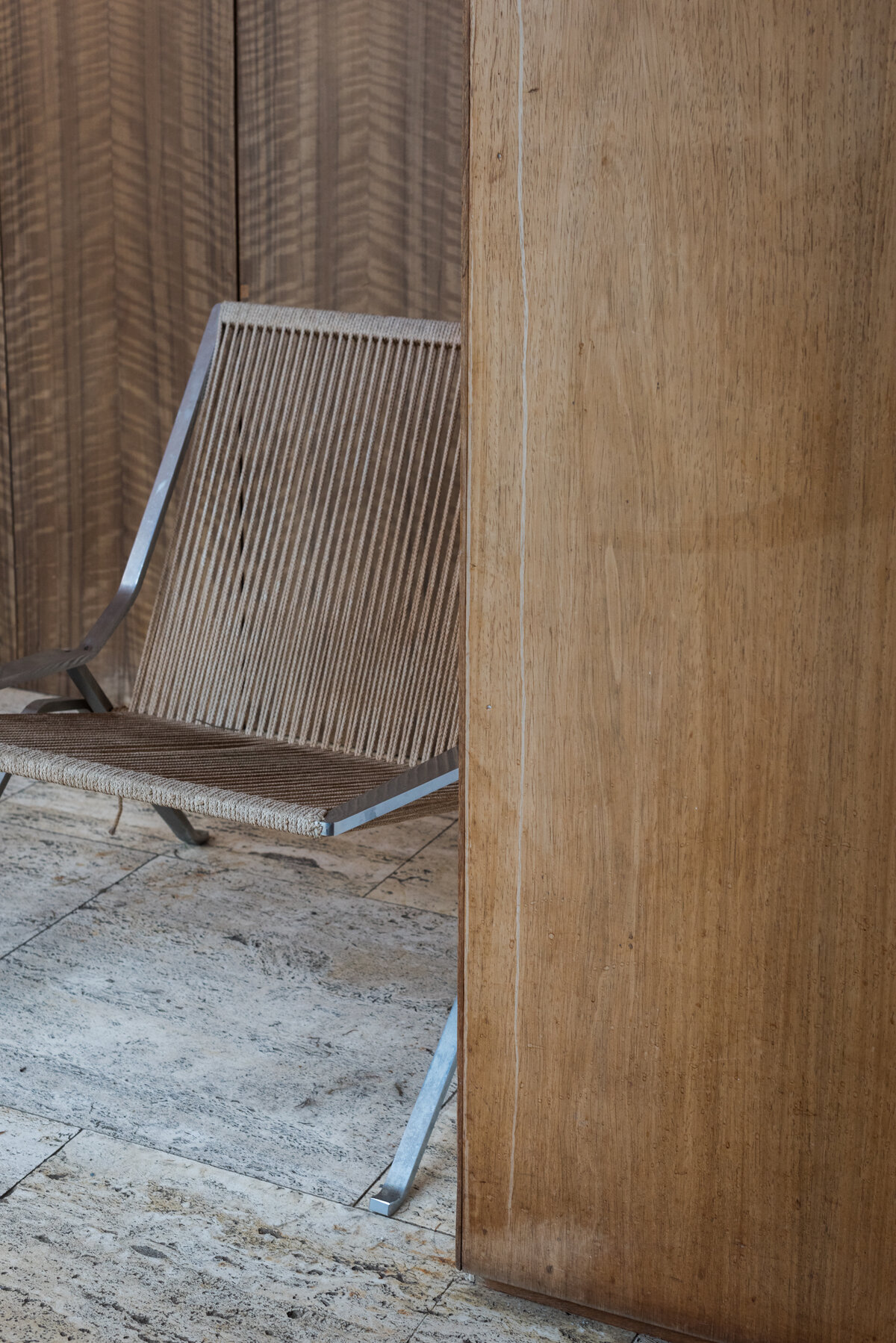
Designed by architect Peter Womersley, the Klein family residence was an immediately stylish and contemporary home influenced by Klein’s love of modernism, design, and the Scandinavian aesthetic.
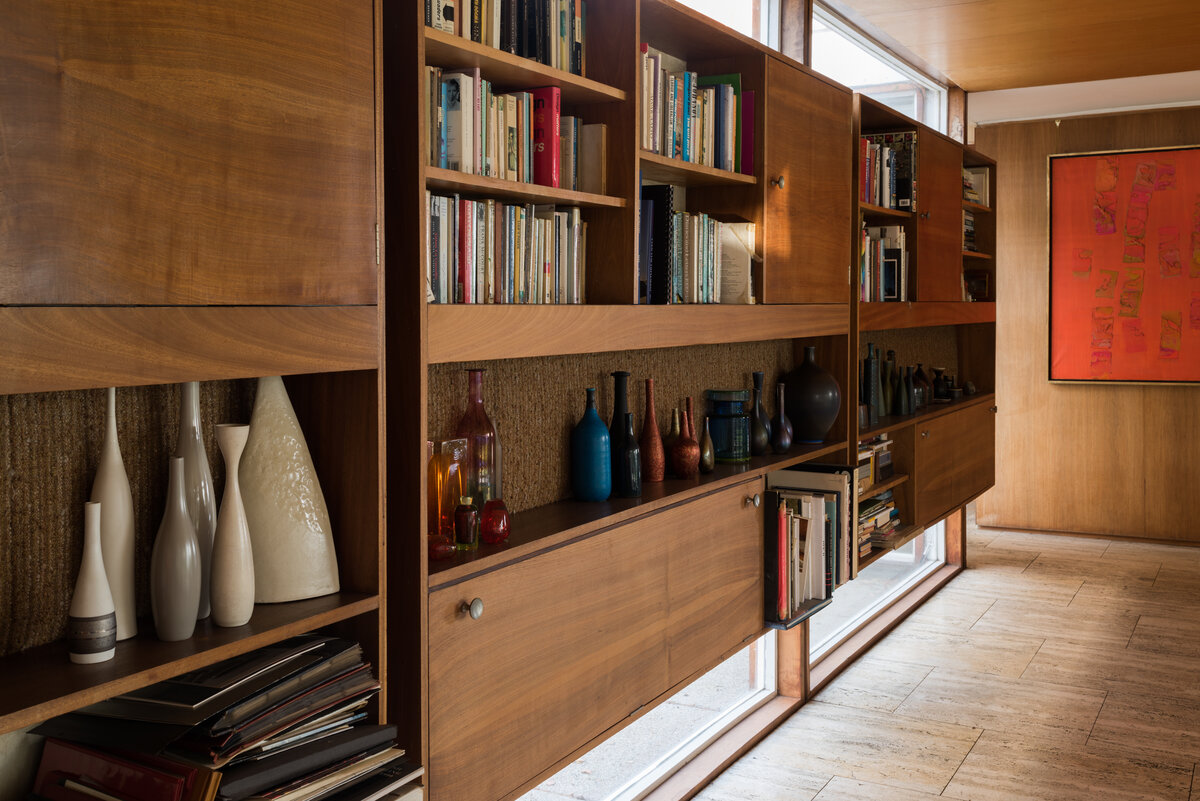
The house remains as Klein first established it and is a record of his disciplined approach to what was allowed, and what was not. Little change has taken place in its sixty years, and the interior is as important as the exterior, as together they complete a picture that is rarely experienced outside photographs, archives, and artefacts.
High Sunderland’s discreet positioning amongst the landscape of the Scottish Borders has become even more intentional as trees planted by Klein have matured around the house protecting its seclusion.
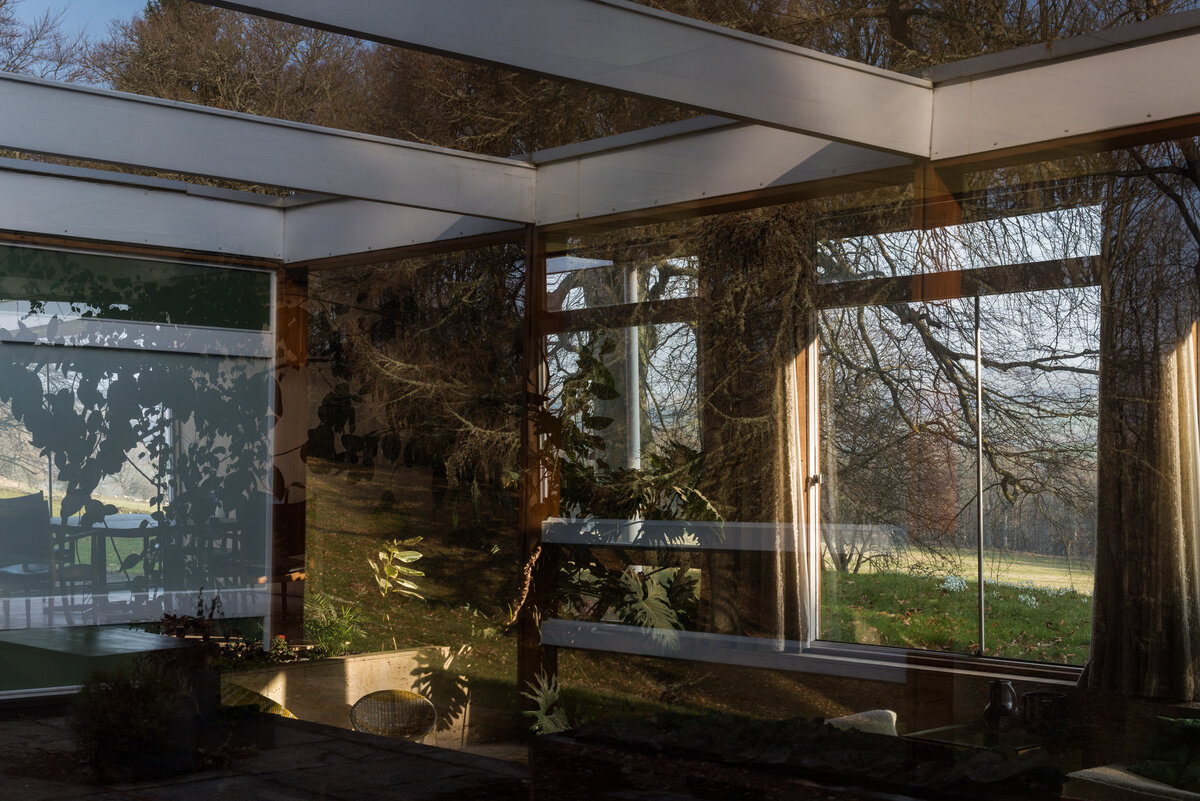
Womersley’s response to Klein’s design brief cleverly frames architecture and landscape as one. From every angle the house offers views through large plate glass windows. The rectangular structure of the outside entrance to the house complements its low level design, placing Klein’s love of landscape and colour in harmony. His easy relationship between art and design alongside his passion for colour and texture was the foundation of his lifetime’s work, and High Sunderland provided endless inspiration.
Klein belonged to what has become defined as the ‘artist-designer’ modernist movement of post-war Britain. Textile designers found their voices through expression and observation, producing exciting collections promoted by innovative manufacturers like Heal’s, The Edinburgh Weavers, and Lida & Zika Escher. Trained in the academic principles of drawing and painting, colour and composition, they became innovators of design for British production. Initiatives such as the 1951 Festival of Britain promoted this new aesthetic to an international market, introducing designers such as Lucienne and Robin Day whose ideas and products helped shape a growing interest in design and home interiors.
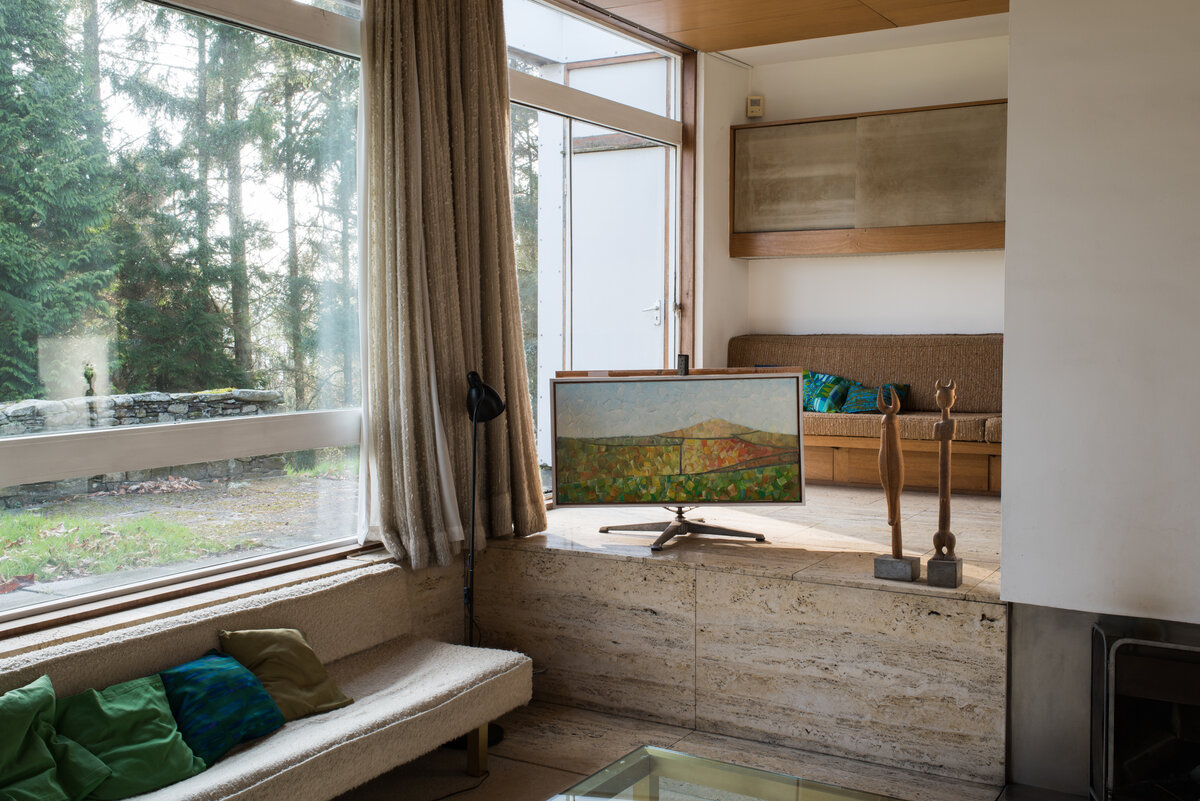
Klein was part of this generation of new designers who were enthused and inspired by the opportunities that design offered.
His highly individual vision of textiles was formed through his experimentation in colour, painting, and new production techniques, which when combined created beautiful textiles that marked the beginning of a period of optimism and excitement for Bernat Klein.
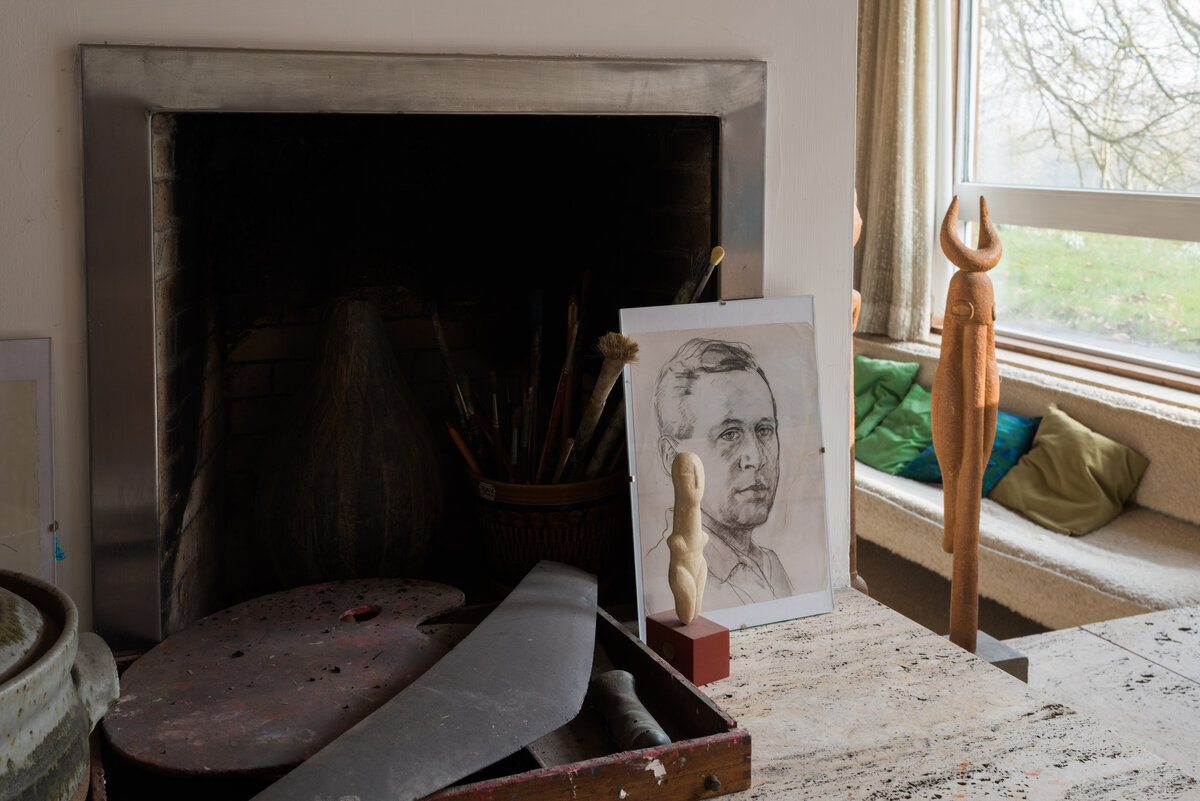
High Sunderland presents these ideas from every aspect, and is almost overwhelming in its purity of intention and longevity of its simplicity. The integrated design of the house creates opportunities for ‘still life’ presentations of Klein’s collections of ceramics; a mix of Lucy Rie alongside inexpensive objects that fulfilled his desire to create a home that was both inspiring and restful. The design of the main living area allows open space and calm, and delineates Klein’s life and work over some sixty years. Womersley’s attention to detail includes low level rectangular windows positioned to create views as well as giving light into the sunken living room.
A collection of Hans Wegner chairs can be glimpsed through a screen of plants that divides the open room, and partially camouflages Klein’s favourite spot in High Sunderland from which to observe the ever changing view of the Eildon Hills. Wood veneer and neutral marble flooring offset Klein’s own muted interior fabric and furniture. An open fire defines places to sit, look and think; and vibrant colour is kept within the frame of Klein's paintings.
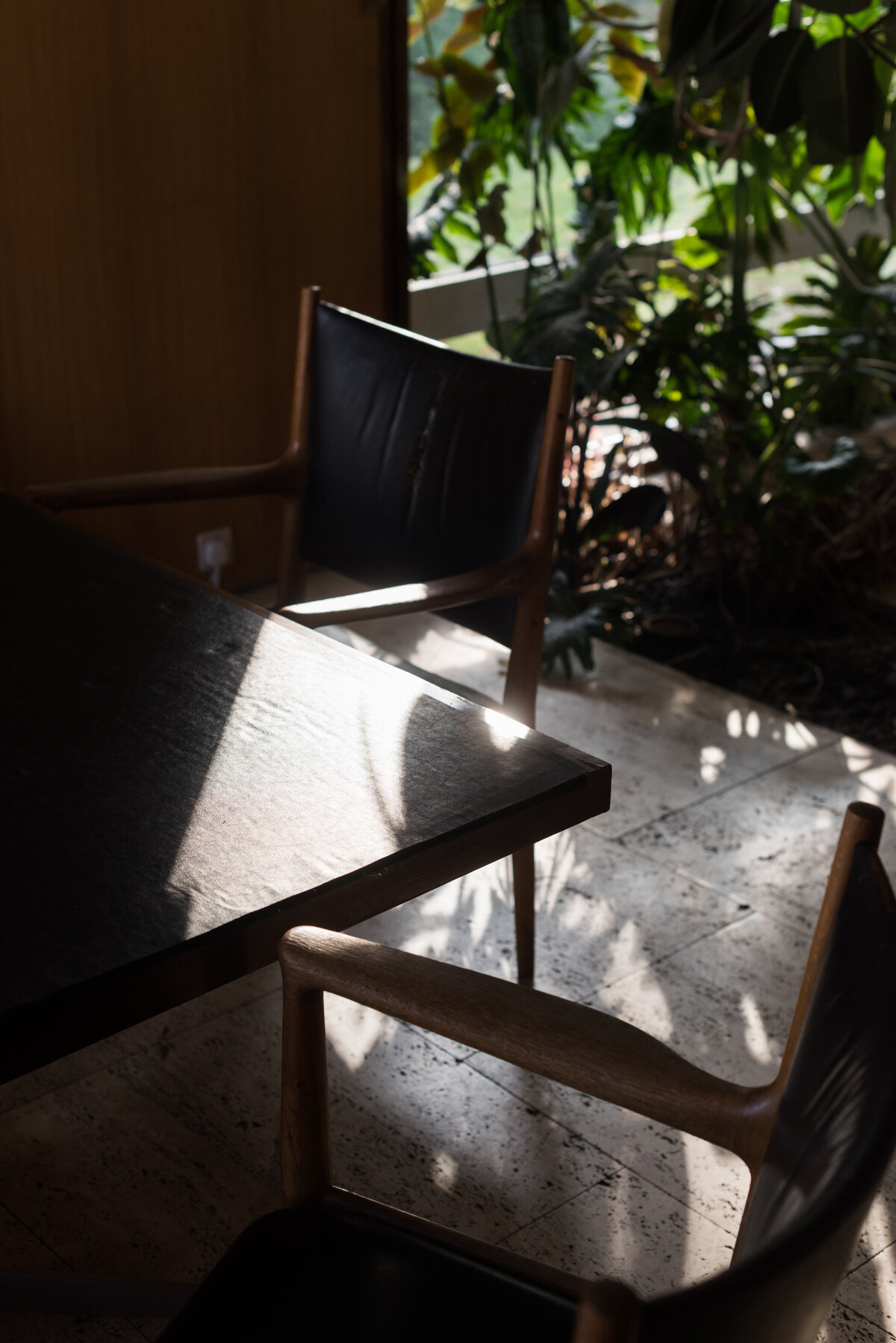
Bold colour, texture, and luscious surfaces of oils applied by palette knives form Klein’s distinctive style that he was able to translate into luxurious textiles.
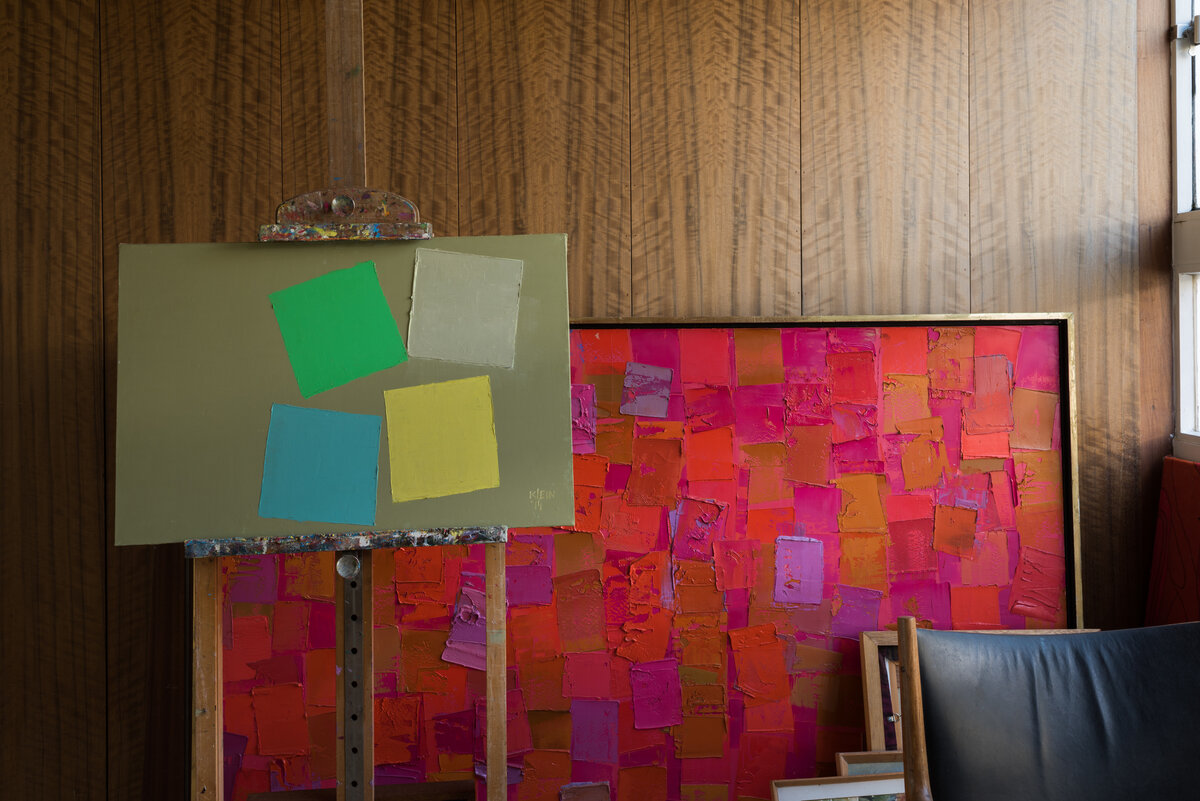
‘Velvet Tweeds’ woven with French ribbon and yarns dipped and dyed into spectrums of colour; mohair tweeds, light and airy in appearance imitating the spots of colour and fragments of light of Klein’s early Seurat and the Post-Impressionists influences. Klein is known best for these 1960s couture textiles that were celebrated on the catwalks of the Paris and London Fashion Houses. High Sunderland was his home but was also the backdrop for fashion shows, and for the international press and photo-shoots that ‘worked’ the architecture of the house into the composition of the image. Colour and texture from his inspired ideas were echoed in the tweeds and specially developed yarns by his wife Margaret Klein, combining their inventiveness to capture Klein’s colour influences. Bernat Klein Scotland became a well-known trademark, representing the mindset of someone determined to look forward and inspired by his adoptive country of Scotland.
High Sunderland is unique and provides an insight into Bernat Klein as a major figure and contributor to Scotland’s design and textile narrative. He elegantly described himself as a ‘British European’, whose choice of living and working in the Borders has left a legacy that is tangible through the architecture and interior of his home. At this moment we can touch history through the door of High Sunderland.

